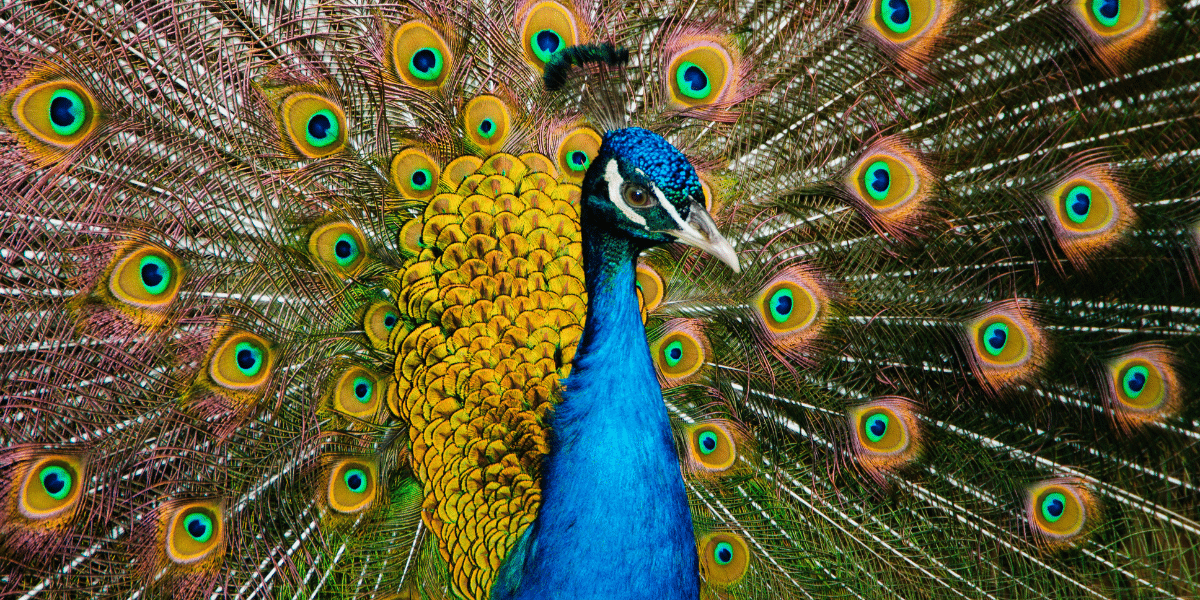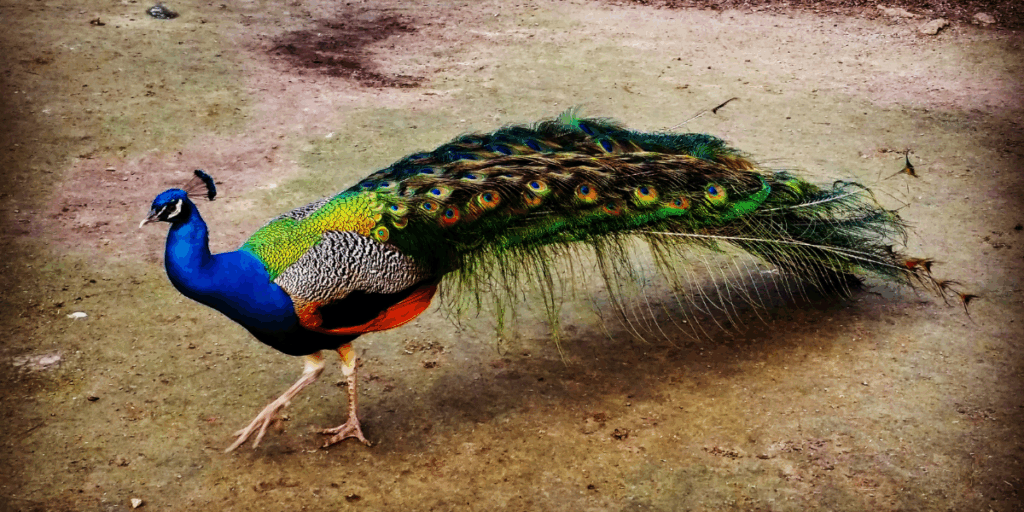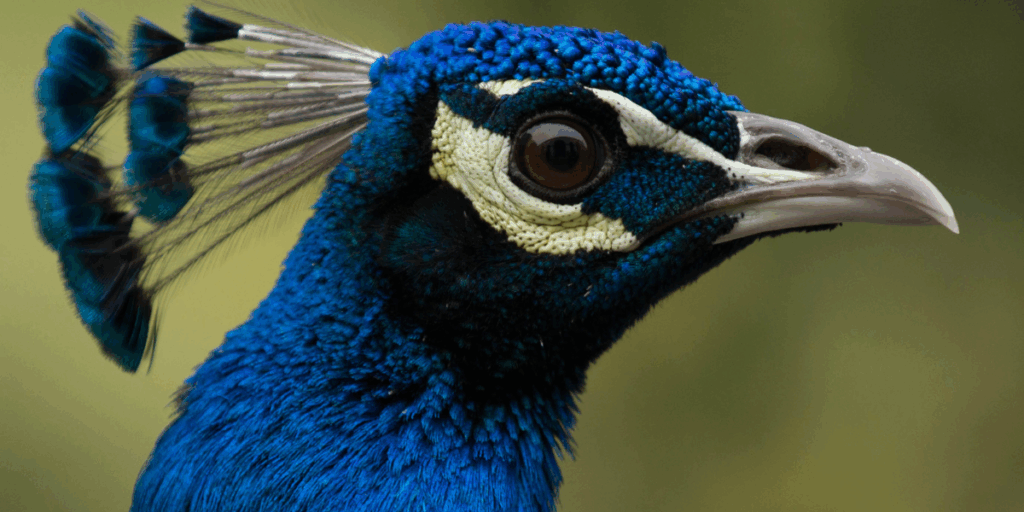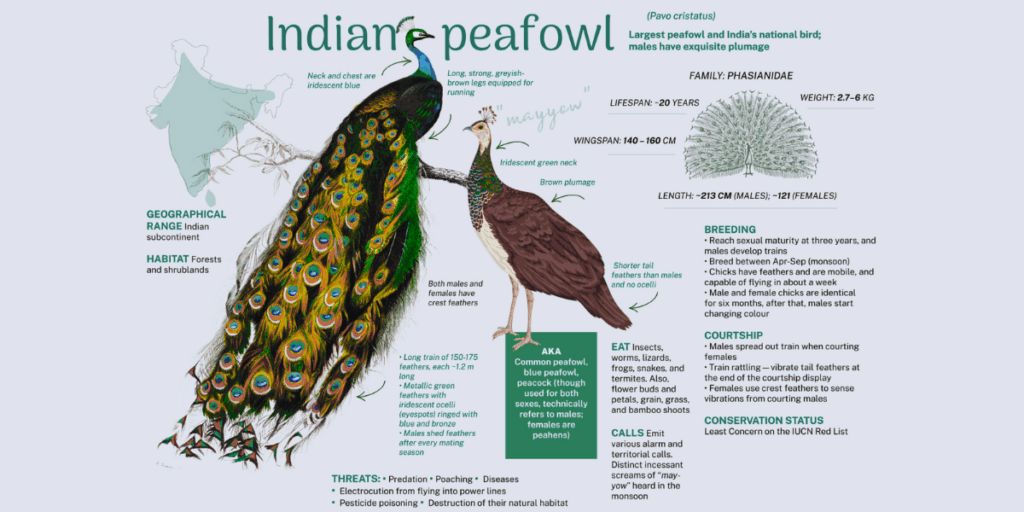
Quick Summary
Table of Contents
The Indian peafowl, or peacock (Pavo cristatus), has been India’s majestic national bird since February 1963. Adored for its flamboyant tail, spiritual ties to Hindu mythology, and presence across the country, the peacock embodies grace, pride, and natural heritage. This blog explores its fascinating anatomy, the cultural symbolism that made it a national icon, and why it continues to inspire artists, storytellers, and conservationists alike.
India, a land of diverse cultures, languages, and traditions, is also home to a rich variety of flora and fauna. Among the many national symbols representing the country’s heritage, the National Bird of India, the Indian Peafowl or Peacock (scientific name: Pavo cristatus), holds a special place. This magnificent bird, with its vibrant colours and graceful movements, is not just a symbol of beauty but also of pride and grace.

The Indian peacock (Pavo cristatus), India’s national bird, is a striking, colourful bird with a fan-shaped crest, a white patch beneath the eye, and a long neck. The male is more vibrant, with a blue breast, neck, and a bronze-green tail spanning around 200 feathers. The female is smaller, brownish, and lacks a tail. Known for its beautiful courtship dance, where the male fans his tail and preens his feathers, the peacock is widely distributed across the Indian subcontinent, from Jammu and Kashmir to Assam and Mizoram.
Protected under the Indian Wildlife (Protection) Act of 1972, the peacock is revered for cultural and religious reasons and is not harmed.
The national bird of India is the Indian Peafowl, widely recognized as the Peacock (Pavo cristatus). Officially given this status in 1963, the peacock holds immense cultural, spiritual, and ecological value across the country. Known for its dazzling, multicoloured feathers, the peacock’s mesmerizing dance, especially during rainfall, has made it a symbol of natural beauty and grace. Beyond its visual appeal, the bird plays a vital role in Indian tradition and mythology, appearing in ancient texts and religious stories. Its deep-rooted connection with Indian heritage is what earned the peacock its place as the National Bird of India.

The Indian Peafowl is a striking bird, with the male being imposing. The male bird, known as the peacock, has a magnificent train of feathers that can spread out in a spectacular display. This train, which can reach up to 1.5 meters in length, is covered in iridescent, eye-like spots that shimmer in various colours, including blue, green, and bronze.
The female peafowl, known as the peahen, is smaller and less colourful than the male, with a dull brown or grey plumage. However, she still possesses a certain grace and elegance that makes her a beautiful sight.
The peacock (Pavo cristatus) is designated as India’s national bird for several reasons:
The peacock was declared the National Bird of India in 1963 due to its rich religious and cultural significance. Its beauty and grace are celebrated in various Indian traditions, art, and mythology. The peacock is common in the Indian subcontinent, found in forests, farmlands, and even near human settlements.
The Indian peacock (Pavo cristatus), India’s national bird, is a colourful, swan-sized bird with a fan-shaped crest of feathers, a white patch under the eye, and a long, slender neck. The male of the species is more colourful than the female, with a glistening blue breast and neck and a spectacular bronze-green tail of around 200 elongated feathers. The female is brownish, slightly smaller than the male, and lacks a tail.

During the mating season, the male peacock performs an elaborate dance, fanning its tail feathers to attract a mate. The female peafowl, known as a peahen, has more subdued brown and grey feathers, which help camouflage her while nesting.
Indian peafowls exhibit several fascinating color mutations, many of which occur rarely in the wild but are common in captivity due to selective breeding. One well-known mutation is the black-shouldered variety, which was once thought to be a separate subspecies. However, Charles Darwin proved it to be a domesticated variation, establishing it as a color mutation rather than a distinct species.

The melanistic mutation causes adult males to have black wings, while females exhibit creamy white and brown markings. The young birds from this mutation are creamy white with fulvous-tipped wings. In addition to melanism, other mutations, such as the pied and white variations, result from genetic changes at specific loci.
Hybrids, like the Spalding, occur when a male green peafowl (Pavo muticus) mates with a female Indian peafowl (P. cristatus). These hybrids, named after bird fancier Keith Spalding, are stable but can present issues if released into the wild. The fertility and viability of such hybrids and their offspring are often reduced due to Haldane’s Rule, which states that hybrid offspring with one sterile parent are typically inviable. These mutations and hybrids contribute to the peafowl’s extraordinary diversity in nature and captivity.
The Indian Peafowl is native to the Indian subcontinent and is widely distributed nationwide. It thrives in various habitats, including:
The diet of the national bird of India is quite varied. Peafowl are omnivores, which means they eat both plants and animals. Their diet includes:

The national bird, the peacock, holds a special place in Indian mythology and is associated with several gods and goddesses. For instance:

The national bird of India has inspired artists and poets for centuries. The peacock’s image is a recurring motif from ancient cave paintings to modern artworks. Indian literature, both classical and contemporary, often references the peacock’s beauty and grace.
Despite its cultural significance and widespread distribution, the Indian Peafowl (Our national bird) faces several threats:
To protect the national bird of India, various conservation efforts have been undertaken:

The Indian peafowl, renowned for its striking beauty, has an impressive lifespan. In captivity, it can live up to 23 years; in the wild, it typically survives for about 15 years. This difference in lifespan is mainly due to predation and environmental challenges in the wild.
While adult peafowls can escape most ground predators, their natural enemies include large predators such as tigers, leopards, hyenas, dholes, and golden jackals. Despite their vulnerability, adult peafowls are challenging to capture due to their ability to fly into trees, evading most predators.
However, young chicks are more susceptible to predation and are often targeted by birds of prey like the changeable hawk-eagle and rock eagle-owl. Peafowls living near human settlements face additional threats from domestic dogs and, in some regions, humans.
Peafowls often forage in groups to mitigate predation risks, benefiting from the collective vigilance of multiple individuals looking out for predators. This social behavior enhances their chances of survival in the wild.
Here are some of the prominent folklore and legends associated with the peacock, the national bird of India:
These rich folklore and legends surrounding the peacock have contributed to the bird’s deep cultural significance and its enduring status as the national symbol of India.
Drawing the national bird of India can be a fun and educational activity for students.

The National Bird of India, the peacock, symbolizes beauty, pride, and cultural richness. Its vibrant colours and graceful dance have captivated people for centuries. Understanding the significance of this magnificent bird helps us appreciate India’s natural heritage and the importance of conservation efforts to protect it.
By learning about the national bird of India, students can gain a deeper appreciation for wildlife and the need to preserve our natural environment. Let us all work together to ensure that future generations can continue to enjoy the sight of these beautiful birds in the wild.
The national bird of India is the Indian Pеafowl, commonly known as thе Pеacock (sciеntifically namеd Pavo cristatus). It holds significant cultural and symbolic importance in Indian tradition.
Indian Pеafowls are found across India, from forеsts to rural and urban arеas. Thеy thrive in regions with suitable habitats, such as opеn woodlands, scrublands, and cultivatеd arеas.
Malе Pеafowls, known as pеacocks, are known for their magnificent iridescent bluе and grееn plumagе, along with a striking fan-shapеd tail Fеmalеs, or pеahеns, havе morе subduеd brown plumagе. The pеacock’s elaborate courtship dance is also a remarkable feature.
India has a rich cultural heritage reflected in its various national symbols. Here are some of the prominent ones:
National Anthem: Jana Gana Mana
National Flag: Tricolour
National Emblem: Ashok Chakra
National Animal: Bengal Tiger
National Bird: Indian Peacock
National Flower: Lotus
National Tree: Banyan
National Fruit: Mango
National River: Ganga
National Calendar: Indian National Calendar
National Game: Hockey
National Currency: Indian Rupee
National Heritage Animal: Indian Elephant
National Aquatic Animal: River Dolphin
India’s national bird is the Indian peafowl, commonly known as the peacock (Pavo cristatus). Celebrated for its iridescent plumage and expanding fan-like train, the peacock was officially designated the national bird in February 1963 due to its widespread presence, cultural significance, and symbolic elegance.
The national animal of India is Royal Bengal Tiger, symbolizing strength, power, and wildlife richness, was officially adopted in April 1973. The national bird is the Indian peafowl, selected in 1963 for its beauty, prevalence, and symbolic resonance.
The peacock was chosen as India’s national bird for several compelling reasons:
It is native to India and widely found across different regions of the country
Its vibrant plumage and elegant courtship display symbolize beauty and dignity
Deeply woven into Indian mythology and religion, it is tied to gods like Krishna and Murugan, thus reflecting cultural heritage.

Authored by, Muskan Gupta
Content Curator
Muskan believes learning should feel like an adventure, not a chore. With years of experience in content creation and strategy, she specializes in educational topics, online earning opportunities, and general knowledge. She enjoys sharing her insights through blogs and articles that inform and inspire her readers. When she’s not writing, you’ll likely find her hopping between bookstores and bakeries, always in search of her next favorite read or treat.
Editor's Recommendations
Chegg India does not ask for money to offer any opportunity with the company. We request you to be vigilant before sharing your personal and financial information with any third party. Beware of fraudulent activities claiming affiliation with our company and promising monetary rewards or benefits. Chegg India shall not be responsible for any losses resulting from such activities.
Chegg India does not ask for money to offer any opportunity with the company. We request you to be vigilant before sharing your personal and financial information with any third party. Beware of fraudulent activities claiming affiliation with our company and promising monetary rewards or benefits. Chegg India shall not be responsible for any losses resulting from such activities.